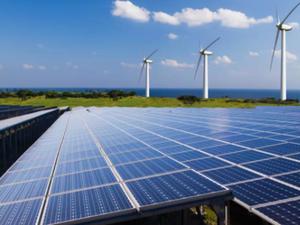India and its 450 GW renewable energy target figure prominently in the US government’s ‘Energy Compact’ and is part of its climate ambitions formally submitted to the United Nations at the September 22-23 high-level dialogue on energy.
‘Energy Compacts’ are voluntary commitments from UN member states, setting out actions planned to advance clean, affordable energy for all by 2030 and net zero emissions by 2050.
Over 130 Energy Compacts have been submitted so far by a range of stakeholders, including India and the United States.
Citing the September 2021 agreement between the United States and India through the US-India Climate and Clean Energy Agenda 2030 Partnership, the US Energy Compact document states that it will harness a diverse set of resources, spanning a network of US laboratories to help emerging economies like India transition to clean energy and go towards a ‘global net zero transition.’
“Major emerging economies are projected to drive global emission growth absent urgent action in this critical decade through 2030 to curb emissions,” according to the US Energy Compact. “An example of urgent action includes rapidly ramping up renewable energy in India’s power sector between now and 2030, an essential element of that economy’s energy transition and of a global net-zero transition. In addition to its ambitious 2030 renewable energy goal, India has also set an interim goal of 175 gigawatts of installed renewable energy capacity by 2022,” it added.
The US administration has said that helping accelerate the clean energy transition in India will set ‘an example for promoting rapid clean energy transitions and economic development in emerging economies around the world.’
The US is increasingly supportive of India’s 450 GW target as an ambitious move towards addressing the climate crisis. Its Special climate envoy John Kerry also recently nudged India to include it as part of its target/ Nationally determined contribution in the upcoming COP 26 climate talks.
“India is the third-largest energy consumer and its domestic greenhouse gas emissions account for more than seven percent of the global total, the third most behind China and the United States,” it said. “An encouraging sign is that India is setting a global example for emerging economies on renewable energy deployment, having achieved 100 GW of installed renewable capacity through 2021. Keeping the goal of limiting average global temperature rise to 1.5 degrees Celsius alive through 2030 is dependent, in part, on India acting urgently this decade to rein in emissions, including through achieving its target of 450 GW of renewable energy, which the United States is committed to supporting India in achieving,” it added.
The US government elaborated that it would support energy transitions in major emerging economies, such as India, Indonesia, and South Africa, to ‘increase substantially the share of renewable energy in the global energy mix’ by 2030.
The India-US climate agenda and its two components – the Strategic Clean Energy Partnership and the Climate Action and Finance Mobilization Dialogue launched recently in New Delhi with US Special climate envoy John Kerry — are cited as examples of the kind of bilateral action planned.
“The Agenda 2030 Partnership will promote US-India bilateral collaboration to help India reach its 450 GW renewable energy goal by 2030. The Partnership will support the development of ambitious climate targets and roadmaps, foster collaboration on clean energy innovation and deployment, mobilize investment in clean infrastructure, and enhance India’s capacity to measure, manage, and adapt to climate change,” the Energy Compact pointed out.
The 450 GW target also figures prominently in India’s own Energy Compact submitted to the UN. India has said that a cumulative investment of Rs 17,00,000 crore ($221 billion) is required to set up 450 GW renewable generation capacity, including the associated transmission and storage systems.
The ambitious renewable energy target is estimated to create 700,000 new jobs in India.
Source: economictimes.indiatimes.com









